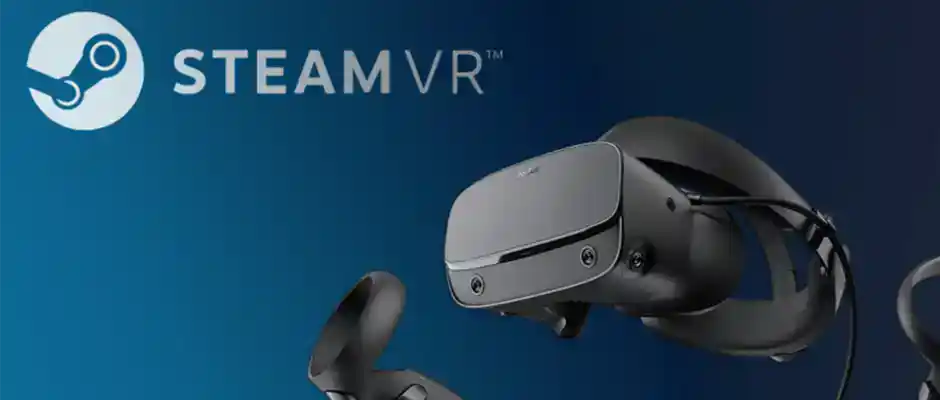Valve Leaks Steam Frame: Standalone VR Headset to Rival Quest
Valve has built a reputation for pushing PC gaming hardware forward, from the groundbreaking Steam Deck to the high-fidelity Valve Index. Now, all signs point to the company’s next big leap: a standalone VR headset. Recent leaks suggest the rumored device—codenamed “Steam Frame”—could be Valve’s answer to Meta Quest, bringing portable, untethered virtual reality directly to the Steam ecosystem.

Steam Frame Trademark Speculation
The buzz started when Valve quietly trademarked the name “Steam Frame.” At first, some speculated this could refer to a new home console, possibly connected to the long-rumored Valve Fremont project. Others thought it might be an expansion of SteamOS beyond handhelds like the Steam Deck.
But insider reports and a fresh leak from respected tipster SadlyItsBradley suggest otherwise. He claims Valve is in the process of rebranding its SteamVR “Overlays” to “Frames,” strongly hinting that the new hardware title is tied to virtual reality. If true, Steam Frame isn’t just another console—it could be a next-generation VR headset.
For Valve, this could be a major opportunity to boost its presence in a market currently dominated by Meta Quest devices. A standalone Steam-powered headset would make VR more accessible while deepening the integration with PC gamers who already rely on Steam.
A Closer Look at the Rumors
Leaked details suggest the Steam Frame may build upon the canceled or delayed “Valve Deckard” headset project. One key rumor is the introduction of Roy VR controllers, which are said to feature advanced tracking capabilities to improve immersion.
Another piece of the puzzle comes from a Reddit thread, where references to a “SteamVR Link Wireless Dongle” appeared.
|
Such a device would let the headset connect wirelessly to a PC, unlocking higher performance VR experiences without cables. That flexibility would put the Steam Frame in direct competition with Meta Quest 3, which already supports standalone and PC VR modes. Price speculation, however, may prove to be a sticking point. Early leaks suggested the headset could launch around $1,200 (£950), a steep figure compared to the Quest 3’s $500 price tag. Tariffs, regional taxes, and component costs could push the final number higher or lower, but if Valve wants to rank as a top contender in the VR market, competitive pricing will be critical. |
 |
Could Steam Frame Be Part of a Bigger Launch?
Not all rumors point to Steam Frame existing as a standalone product. Some leakers believe Valve may pair the headset with a new home console, similar to how Meta integrates its headsets with broader ecosystem services. If Valve Fremont, a console built on SteamOS, is indeed in development, the headset could launch alongside it as a premium accessory.
This dual strategy would make sense. By offering both a standalone VR headset and seamless compatibility with a dedicated console or PC, Valve could boost adoption across multiple types of gamers. Hardcore PC users would enjoy high-performance wireless VR, while newcomers could enter the ecosystem without needing an expensive rig.
Performance Expectations and Challenges Ahead
For Steam Frame to succeed, it will need strong technical specs. The Valve Index set a high bar with 120Hz refresh rates and crisp visuals, so fans are expecting at least 1440p resolution and similar refresh capabilities. Anything less may feel underwhelming compared to competitors.
As for the type of games that will be available in the new gaming system, players can only speculate. From our point of view, a modern VR gaming system by Steam could potentially revolutionize the gaming industry by integrating a wide variety of peripherals into VR and allowing players to experience new ways to play classic titles such as Counter-Strike 2, Valorant, or, who knows, even League of Legends in VR.
Another challenge is competition. Alongside Meta Quest 3, which has established itself as the go-to headset for casual VR gamers, Samsung is preparing its Project Moohan headset, expected to launch at a premium $1,800 price. Meanwhile, Meta Quest 4 is rumored to arrive in the near future, making the VR market more crowded than ever.
Valve will need to balance pricing, accessibility, and performance if it wants Steam Frame to rank highly in the minds of consumers. Without that, even deep Steam integration might not be enough to break Meta’s stronghold.
When Could We See Steam Frame?
The big question remains: when will Valve make this official? Most leakers suggest a reveal by the end of 2025, which fits with Valve’s typical long development cycles. If true, gamers could see Steam Frame unveiled within the next year, potentially alongside other major announcements like the Steam Deck 2.
Until then, speculation will continue, but one thing is clear: Valve isn’t done experimenting with hardware. The Steam Deck proved the company can boost innovation in handheld gaming, and a standalone VR headset could be its next big play.
Final Thoughts
Valve entering the standalone VR space with Steam Frame could be a turning point for both the company and the wider VR industry. While Meta remains the current leader, the strength of the Steam library, combined with Valve’s track record for quality, gives this project serious potential.
If priced right and packed with competitive features, Steam Frame could challenge the Meta Quest line, boosting VR adoption among both casual players and dedicated PC gamers. Whether it launches as part of a console bundle or as a standalone device, Valve’s move into wireless, all-in-one VR hardware could help the company rank as a true rival in the future of immersive gaming.

GG Boost, the Best Elo Boosting Experience!
 Deutsch
Deutsch  Français
Français  Español
Español  Português
Português